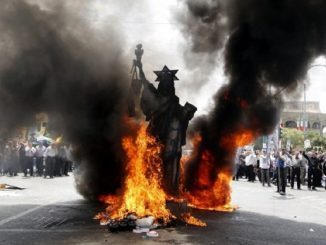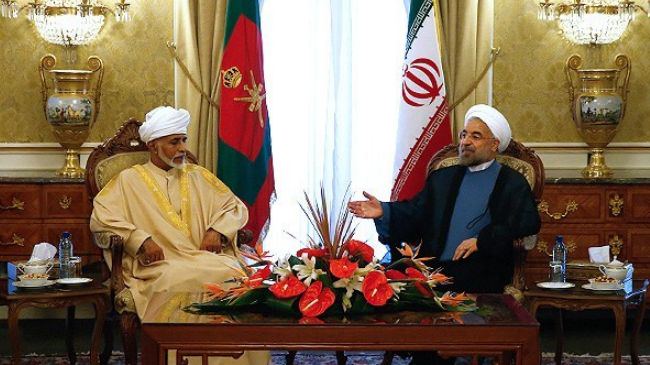
When Ayatollah Ruhollah Khomeini, founder and leader of the Islamic Republic, died in 1989 the danger of political crisis meant his passing was not reported for several hours and within a day his successor — Ayatollah Ali Khamenei — was announced.
The post of rahbar (leader) is easily the most powerful in Iran. Because Khamenei, 77, had prostate surgery in 2014, there has been discreet speculation as to who might follow in his shoes.
The possibility that the Assembly of Experts (Majles-e Khobregan-Rahbari) might be called on to make this choice in its new eight-year term encouraged a 62% turnout by Iranian voters in February to elect its 89 members. But the assembly’s inner workings remain impervious to outside eyes.
“It’s near to impossible to be confident about any names [for the next supreme leader] at this stage, although there are many in the speculative mix,” said Farideh Farhi, of the University of Hawaii at Manoa. “Among them, an argument can be made that even President [Hassan] Rohani is among those auditioning.”
Rohani, a robust 67, lacks pre-eminence as an Islamic scholar. The requirement that the leader be a marja, the most senior Shia Muslim cleric, was removed from the constitution in 1989, apparently to allow Khamenei, then just 49 and holding a similar rank (hojatoleslam) to Rohani today, to succeed as Khomeini’s chosen heir. The Experts Assembly might prefer someone with the higher clerical rank of ayatollah.
The notion of the leader combined from the start pre-eminence as an Islamic jurist with political leadership, a challenging conception based on Khomeini’s dynamic personality and intelligence.
The leader’s office has widened its sway under Khamenei, with representatives throughout the bureaucracy, military and provinces. Running it is no mean task.
While Khamenei has generally sympathised with Iran’s conservatives, his support has also been crucial to the government accepting limitations on its nuclear programme under last year’s agreement with world powers.
Khamenei has acted as an arbiter between factions, intervening in 2005 to allow two reformists to run for president after they were barred by the watchdog Guardian Council and later curbing the “excesses” of president Mahmoud Ahmadinejad in his second term.
Farhi portrays Khamenei as an “institution builder” who has transformed the leadership from a post resting on Khomeini’s charisma. “Ayatollah Khamenei’s legacy, like almost all other Middle Eastern leaders, will be shaped more by the way he parts than by what he has done as leader,” she said.
This includes some role in the succession. Hence Khamenei’s appointment in March of Ebrahim Raeesi, previously national prosecutor-general, as chairman of Astan Quds Razavi, the foundation managing the shrine of Imam Reza in Mashhad, was seen by some as Khamenei elevating a possible successor.
Until 2015, the front runner had been seen as Ayatollah Mahmoud Hashemi Shahroudi, 67, who had been acting chairman of the Experts Assembly for nine months and had earlier been assigned tasks by Khamenei — including mediating between president and parliament — that were the leader’s responsibility.
But revelations that Shahroudi was under judicial investigation over financial irregularities linked to Iraq, where he has extensive networks, led to his sudden withdrawal in 2015 from the election of a new Assembly chairman, which was won by 84-year-old Ayatollah Mohammad Yazdi, himself succeeded in May by 89-year-old Ayatollah Ahmad Jannati.
This does not rule out Shahroudi from the succession but suggests his broad appeal among clerics, the military and politicians gives him enemies. And the role of the judiciary in his demise has fed speculation that judicial chief Sadeg Larijani seeks a kingmaker role in the leadership succession or even to be himself a candidate.
At 55, Larijani has time on his side. The recent judiciary decision to execute the nuclear scientist Shahram Amiri as an alleged spy showed how decisive he can be, although many in the political class say Larijani is divisive.
Some analysts in Tehran see the Amiri execution, as well as the arrests of dual-nationals, as part of the factional battle centred both on next May’s presidential election and, more obscurely, the leadership succession.
A fourth possible candidate for the leadership, none other than Rohani, may well have accepted the torch of pragmatic conservatism from his long-term ally, former president Akbar Hashemi Rafsanjani, who at 82 seems too old, and probably too controversial, to become leader.
Saeid Golkar, senior fellow at Chicago Council of Global Affairs and lecturer at Northwestern University, points out that Rohani has recently assigned more projects to the Islamic Revolutionary Guards Corps.
“While his main support is among the technocrats and bureaucrats, he is trying to silence hard-line criticism,” Golkar said.
Rohani certainly has an eye on next May’s presidential election but the leadership succession casts such a shadow that it is seen almost everywhere.



